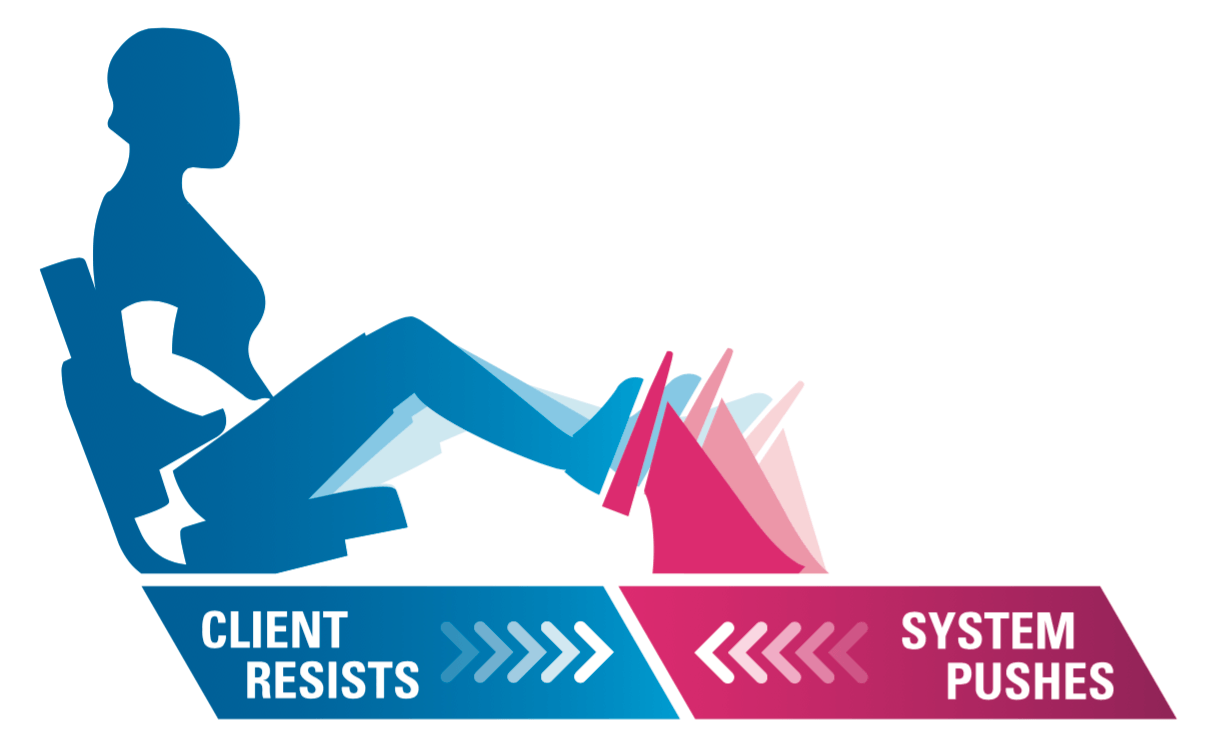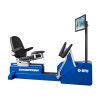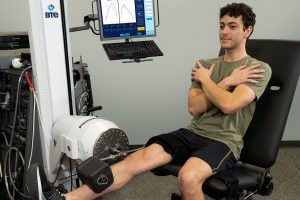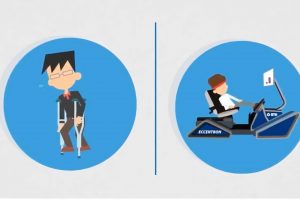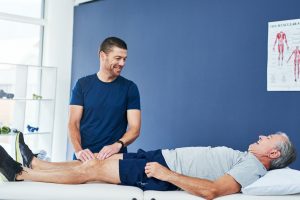
How to Treat Patellofemoral Pain Syndrome
Treatment GuidelinesWhile PFPS can be debilitating, treatment usually focuses on optimizing strength and function. One of the most effective known treatments for Patellofemoral Pain Syndrome is guided exercises to increase knee and hip strength.
Knee pain is one of the most common conditions treated in clinics and gyms globally. While there are many types of knee pain, one of the most common is Patellofemoral Pain Syndrome (PFPS). Our understanding of this condition is constantly evolving and there are several factors to consider when addressing it in rehab. In this article we discuss current definitions, major causes, and the most effective treatments for PFPS.
What is Patellofemoral Pain Syndrome (PFPS)?
Patellofemoral Pain Syndrome (PFPS) is a specific class of anterior (front) knee pain. Its most common characteristic is pain behind or around the kneecap1. This knee pain can worsen with knee-loading activities like climbing stairs, squatting, and running. Symptoms can also get worse with prolonged sitting or kneeling.
People with PFPS describe their pain as difficult to localize, and symptoms usually appear gradually2. Joint stiffness and crepitus (creaking and crackling with motion) are very common complaints. It typically doesn’t cause swelling or inflammation of the knee.
Who Is at Risk?
While there are many factors in developing Patellofemoral Pain Syndrome, the exact causes are still unknown. You don’t need an x-ray to identify PFPS, but it can help rule out conditions like osteoarthritis (OA), fracture, and osteochondritis2.
Examining gait, posture, and footwear can also you clinician identify potential contributors. Other possible influential factors include inadequate knee strength, inadequate hip strength, and decreased flexibility of the leg muscles3.
Patellofemoral Pain Syndrome occurs in both the general population and highly active groups such as athletes. It is more likely to affect women than men. The most affected age range is fifteen to thirty years4. One suggested cause of PFPS is repetitive overloading of the knee joint due to imbalanced forces controlling the kneecap5.
Treatment Options for PFPS
While PFPS can be debilitating, treatment is usually non-surgical and focuses on physical therapy to optimize strength and function. One of the most effective known treatments for Patellofemoral Pain Syndrome is guided exercises to increase knee and hip strength.
Current research shows that stretching and strengthening exercises for the external rotators of the hip, abductors of the hip, and extensors of the knee are effective treatments. These exercises can relieve pain and improve function for those dealing with PFPS6,7 . Other common treatments may include changing your walking shoes, improving technique during activities like squatting, or temporary use of a knee brace to offload the joint.
Eccentric Training for PFPS
One of the most effective techniques for treating Patellofemoral Pain Syndrome is eccentric training. Eccentric training refers to performing exercise with a slow, controlled motion while returning to the starting position. One of the best ways to train eccentrically is with the BTE Eccentron.
This unique rehab equipment utilizes an eccentric-only resistance system to train the lower extremities strength in a safe, objective way. Instead of focusing on the concentric phase, the client is only doing active work during the eccentric or resisting phase.
With its interactive visual feedback, the Eccentron is engaging and easy to use for routine eccentric training. Using a high resistance setting, athletes can train under heavy eccentric loads with ease. On a low setting, resistance becomes the equivalent of walking down the stairs with reduced bodyweight. This customizable resistance makes it an effective option for clients of all strength abilities.
Additionally, recent electromyography (EMG) research shows that the Eccentron yields 4x the eccentric muscle activation than traditional eccentric exercises for rehab, making it one of the most efficient and effective treatments.
Putting it All Together
In conclusion, Patellofemoral Pain Syndrome is a common condition with a complex background and many treatment options. Using exercise to treat PFPS is becoming common practice, but specific parameters for optimal treatment are still being developed. For more information about treating and preventing knee pain, check out these other resources from TherapySpark:
• All About the Sesamoids: Patellar Tendonitis and More
• Eccentrics’ Versatility in Rehab
• Quiz: Knee Anatomy
• Eccentric Balance and Walking Exercises with PrimusRS
• Sit to Stand for Deconditioned Patients
Alex Stone, DPT, CSCS
Connect on LinkedIn
Follow on Instagram
References
- van der Heijden RA, Lankhorst NE, van Linschoten R, Bierma‐Zeinstra SMA, van Middelkoop M. Exercise for treating patellofemoral pain syndrome. Cochrane Database of Systematic Reviews 2015, Issue 1. Art. No.: CD010387. DOI: 10.1002/14651858.CD010387.pub2. Accessed 09 June 2021.
- M.M. McCarthy, S.M. Strickland. Patellofemoral pain: an update on diagnostic and treatment options. Curr Rev Musculoskelet Med, 6 (2) (2013), pp. 188-194.
- Gaitonde DY, Ericksen A, Robbins RC. Patellofemoral Pain Syndrome. Am Fam Physician. 2019 Jan 15;99(2):88-94. PMID: 30633480.
- Lankhorst NE, Bierma‐Zeinstra SM, van Middelkoop M. Factors associated with patellofemoral pain syndrome: a systematic review. British Journal of Sports Medicine 2012;42(2):81‐94.
- Gemma V., Anna A., Mercè B., Marta I. Effectiveness of Manual Therapy Combined With Physical Therapy in Treatment of Patellofemoral Pain Syndrome: Systematic Review. Journal of Chiropractic Medicine. Volume 16, Issue 2. 2017. Pages 139-146. ISSN 1556-3707. https://doi.org/10.1016/j.jcm.2016.10.003.
- Alba-Martín P, Gallego-Izquierdo T, Plaza-Manzano G, Romero-Franco N, Núñez-Nagy S, Pecos-Martín D. Effectiveness of therapeutic physical exercise in the treatment of patellofemoral pain syndrome: a systematic review. J Phys Ther Sci. 2015;27(7):2387-2390. doi:10.1589/jpts.27.2387
- Willy RW, Hoglund LT, Barton CJ, et al. Patellofemoral Pain. J Orthop Sports Phys Ther. 2019;49(9):CPG1-CPG95. doi:10.2519/jospt.2019.0302

